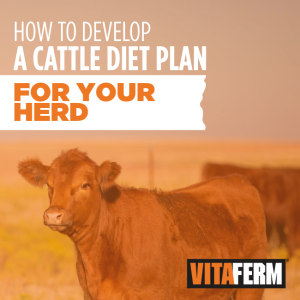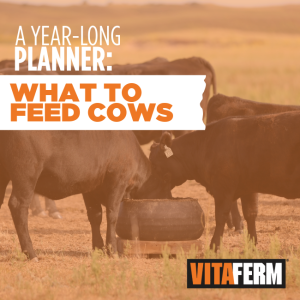
One of the most rewarding days of the year for cow-calf producers is sale day. However, watching a calf crop grow from calving to weaning brings many challenges. Braving the blowing snow to save a calf from the ice and cold to ensure survival to make it to the sale barn is a challenge. Waiting it out at 2 a.m. while a former show cow delivers her ninth healthy calf can cost you some sleep.
Nevertheless, the memories of those challenges fade away when those healthy calves come through the processing chute at weaning. You know they will go to the sale barn and receive a premium.
However, before those calves ever hit the ground, the growth and development that occurs in the uterus sets the stage for what happens once they are delivered. Understanding the stages of fetal development is important information for cow-calf producers to ensure that they have a thriving calf crop that makes it to the sale barn.
What are the Stage of Fetal Development?
Producers are becoming more familiar with the term “fetal programming.” Science has evolved on how cow management and nutrition synergistically impact the health, performance and productivity of their offspring. Let’s explore what fetal programming is, two critical stages and how to best impact your bottom dollar when it comes to sale day.
Early Gestation
Following fertilization of the oocytes, mitotic cellular divisions begin to take place (identical cell replication). This is the earliest stage of embryogenesis. At 24 hours, the fetus is a 2-celled embryo; on day 1.5, it is 4-celled. By day 3 it reaches 8 cells as it travels down the oviduct toward the uterus, entering it between days 5-6. This is when massive growth begins. On day 13, the fetus will be about 3 mm in diameter. By day 18, fetal membranes will be large enough to occupy portions of both uterine horns.
During this phase, portions of the developing cells will become the placenta. Maternal recognition of pregnancy will occur in the cow, 15 to 17 days following ovulation, with uterine attachment of the placenta between days 19 to 22 (See Table 1).

Further development begins to take place at this point. By days 20-22, a heartbeat is established in the fetus. On day 25, limbs begin to develop along with organs, such as the liver, pancreas, lungs, thyroid, brain and kidneys. By day 45 of gestation, the testicles of the male fetus will begin to develop. In the female, ovarian development takes place 50 to 60 days following ovulation. Around day 49 the digestive system begins to develop.
Third Trimester
While the fetus is continually growing in size throughout the gestation, more than 75% of its total weight gain and growth happens in the last trimester of gestation. Table 2 shows the dramatic increase in size that is taking place during development, putting great demand on the mother. As gestation draws to an end, the deposition of brown fat is completed, accounting for 2% of the live birth weight of the calf. In addition, the final development of the lungs is taking place, making it a critical time for the health of the unborn calf.
Why Nutrition Matters
Research has proven that proper nutrition of the fetus during pregnancy has profound impacts on feedlot performance and has a positive influence on the overall health and immunity of the calf.
“All nutrients play a pivotal role in fetal growth and development, but it’s a matter of providing enough of the ‘right’ ones at the ‘right’ time. Energy and protein are the most common considerations when assessing a nutrition program during gestation, as they are usually the most limiting nutrients. However, never take a good vitamin and mineral program for granted,” said Chris Cassady, Ph.D., BioZyme® Inc. Senior Manager of Beef Technical Sales.
Metabolism and several other fundamental bodily processes rely on adequate macro and trace mineral supplementation. These nutrients play an important role in bone formation, hormone development and secretion, enzyme function and more. Trace minerals such as zinc, chromium, selenium, iron and manganese are known to have a significant impact on reproduction and subsequent calf health. Sufficient trace mineral supplementation ensures proper growth of the fetus and plays a key role in colostrum quality and immunoglobulins produced.
A cow’s nutrient requirements in early gestation aren’t terribly different than her daily maintenance requirements, but as fetal growth increases so does the rest of her nutritional needs. During this time, you aren’t just feeding the cow; you are also feeding her growing and developing calf.
“Once a cow enters lactation, she will need much higher levels of protein and energy. If her feeding program isn’t meeting her needs, she will begin to pull condition off her back to continue providing for her calf, and her performance will begin to lag,” Cassady cautions.
Details Matter
“You will also need to feed a first-calf heifer or second-calf female much differently than a mature cow. A young pregnant female that is still growing needs more protein than a mature cow. If there aren’t enough nutrients for the heifer and her growing fetus, she will use what is available first to meet her own growth and maintenance needs.”
Fetal development in beef cattle isn’t only about growing a healthy calf at birth and making sure your cows stay in ideal body condition. Research shows that those cows supplemented with extra protein in the third trimester weaned off heavier-muscled male offspring. The same calves also posted heavier weaning weights and adjusted 205-day weights.
These offspring were more likely to have more desirable quality grades at harvest. The female calves, also out of cows who had been fortified with additional protein, also reached puberty earlier, meaning they could breed earlier. These females started their return on investment faster than females out of cows that did not receive extra protein.
A Mineral Program Makes the Difference
Ensure that your cow herd is receiving sufficient nutrition. Provide it with a high-quality supplement like VitaFerm® Concept•Aid®.
The high vitamin and mineral fortification cater to the heightened nutrient requirements of the cow during the last trimester and early lactation. VitaFerm® is a line of nutritional supplements for beef cattle that maximize energy and forage utilization for successful production.
BioZyme® utilizes organic trace minerals, the highest quality and most stable bioavailable trace minerals on the market and high levels of Vitamin E in all their Concept•Aid products. In addition to a suite of vitamins and minerals, Concept•Aid includes AO-Biotics® Amaferm®.
More about Amaferm
Amaferm is prebiotic research-proven to enhance digestibility. It is produced from a select AO strain through a proprietary multi-stage, dual fermentation process developed by scientists at BioZyme.
The proprietary process is very important to the final product because AO is a very adaptable organism and can take on different forms and produce many different compounds/metabolites depending on the conditions/media in which it is grown and the conditions of the fermentation products. We have learned through our research that these metabolites are key to the mode of action.
Unlike many other AO products on the market, this process yields a high-quality, consistent product that is solely engineered for use in animal diets.
Amaferm specifically (not just AO) has been extensively researched by universities and private facilities worldwide. More than 100 peer-reviewed papers have been published on Amaferm alone. This research proves Amaferm’s mode of action, impact on the microbes and benefit to the animal in which those microbes reside.
Select the Concept•Aid that Fits Your Needs
Concept•Aid products promote effective, easy breeding when fed 60 days pre-calving through 60 days post-breeding. Concept•Aid is available in different formulations to complement different forage types and qualities to maximize animal performance. BioZyme also offers Concept•Aid in a tub for added convenience and multiple protein options to meet protein requirements during specific stages of production.
Because every producer has a different management system, breeding and calving program and feeding regimen and nutrition protocol, we designed multiple formulas of VitaFerm Concept•Aid. You can discover the Concept•Aid that is best suited for your situation with the Concept•Aid Navigator.
Performance that Pays
Fetal development in the third trimester is important to getting a live, healthy calf on the ground. Make sure your cows are ready in that final trimester to deliver a healthy calf that will grow, gain and put profit in your pocket. Take the steps to provide the right nutrients at the right time and be sure to give your calves the nutritional advantage they deserve.
By supplementing your cows with the VitaFerm Concept•Aid powered by Amaferm, you should wean off healthy, performing calves that bring premiums on sale day. They should go on to perform on the rail or in the pasture. That’s performance that pays, and it starts during the third trimester.
Where Can You Buy Concept•Aid?
All BioZyme products, including the VitaFerm Concept•Aid, are sold through the BioZyme dealer network across the U.S. Use our web portal to find a dealer closest to you. If you would like to purchase VitaFerm products online, you can! Just visit our online store.
Want to continue to receive valuable information about caring for your cow-calf operation? Sign up for our monthly newsletter. It’s full of great information to help you keep your herd healthy and get the best return on your investment possible.



